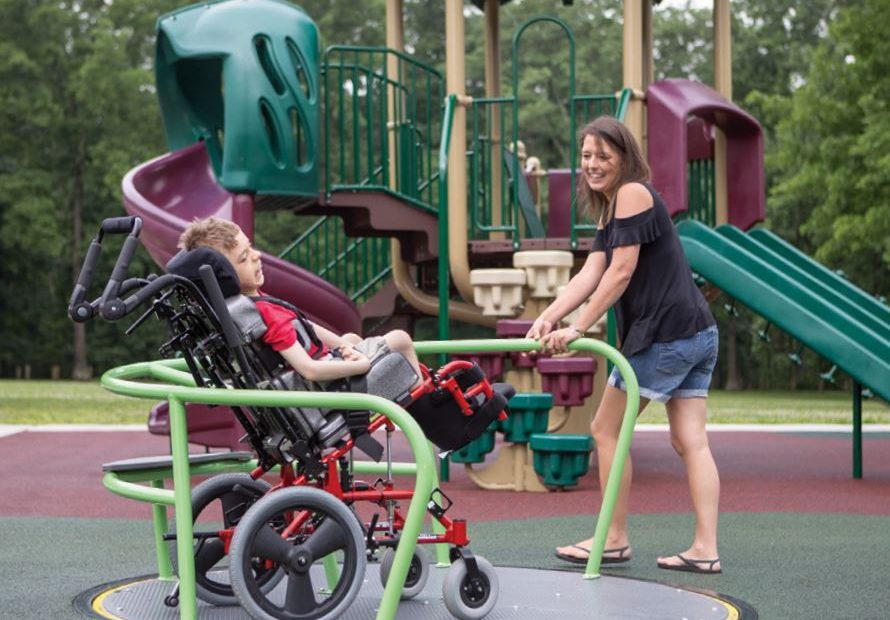Playing on the playground seems like such a simple thing for kids, but it’s so much more than that. Participation in playground play helps children develop physically, mentally and socially; from mastering motor skills and emotional control, to learning how to solve problems and make decisions, playground play helps shape our children into healthy, functioning adults.
So what about the kids who are unable to play on the playground? Not your typical kids, but kids with disabilities that require special equipment in order to access the playground. If a playground is not inclusive, then children with different abilities are often left to sit on the sidelines and watch.
A friend of ours, Alex Diaz-Granados of CerebralPalsyGuidance.com, likes to quote Stephen Hawking when talking about this topic:
“My advice to other disabled people would be, concentrate on things your disability doesn’t prevent you doing well, and don’t regret the things it interferes with. Don’t be disabled in spirit as well as physically.”
As much as it is the responsibility of the disabled to make sure they live their best life, it is also our responsibility as a society to support and include them when it comes to building an inclusive and accessible community.
That being said, we understand that not everyone can afford to install a brand-new inclusive playground. Sometimes it’s just not in the budget. If you are interested in updating the playground in your school, church, neighborhood or community to be inclusive, installing all new equipment is not your only option. You’d be surprised how far a few small upgrades can turn your playground from typical to inclusive.
Here are some basic updates you can make to start turning your playground into an inclusive space:
Synthetic Surfacing – A solid, resilient, unitary surface such as synthetic turf with pad or poured-in-place rubber are found to be the most manageable for someone who is in a wheelchair or uses walking crutches. As budgets sometimes rule out in design decisions, consider combination surfaces where the synthetic surface is a pathway within the playground that is surrounded by the lesser expensive loose fill materials. This provides excellent access, and a variety of textures within the play environment.
Perimeter Containment – Add fencing around the playground. This will keep kids from running or wandering off, especially those who might have a tendency to feel overwhelmed when things get loud or crowded. Fencing around your playground will keep the kids safe and contained.
Quiet Play Areas – Some children can get overstimulated on the playground and need a calm, quiet space in order to feel relaxed and have fun. Adding a secluded corner to the play area with a dome structure is a good idea.
Focus on All Senses – Inclusive playgrounds should be for all children. That means you need to focus on ALL children – all ages and all abilities. Try to include elements that will stimulate multiple senses: bright colors for visual, musical instruments for auditory, sandbox or different textured equipment for touch … even your choice of landscaping can contribute to the sense of smell.
Inclusive playgrounds are the way of the future, because ALL KIDS deserve a safe, interactive and enjoyable play environment that is engaging for children of all abilities. Physical play on the playground is not only beneficial for kids physically, but it garners a feeling of inclusion and self-confidence that has a lasting positive effect on every child.
Visit Park Place Recreation Designs today for more information on inclusive playground equipment, or contact us today to speak with a professional. Let’s build the perfect playground together!
